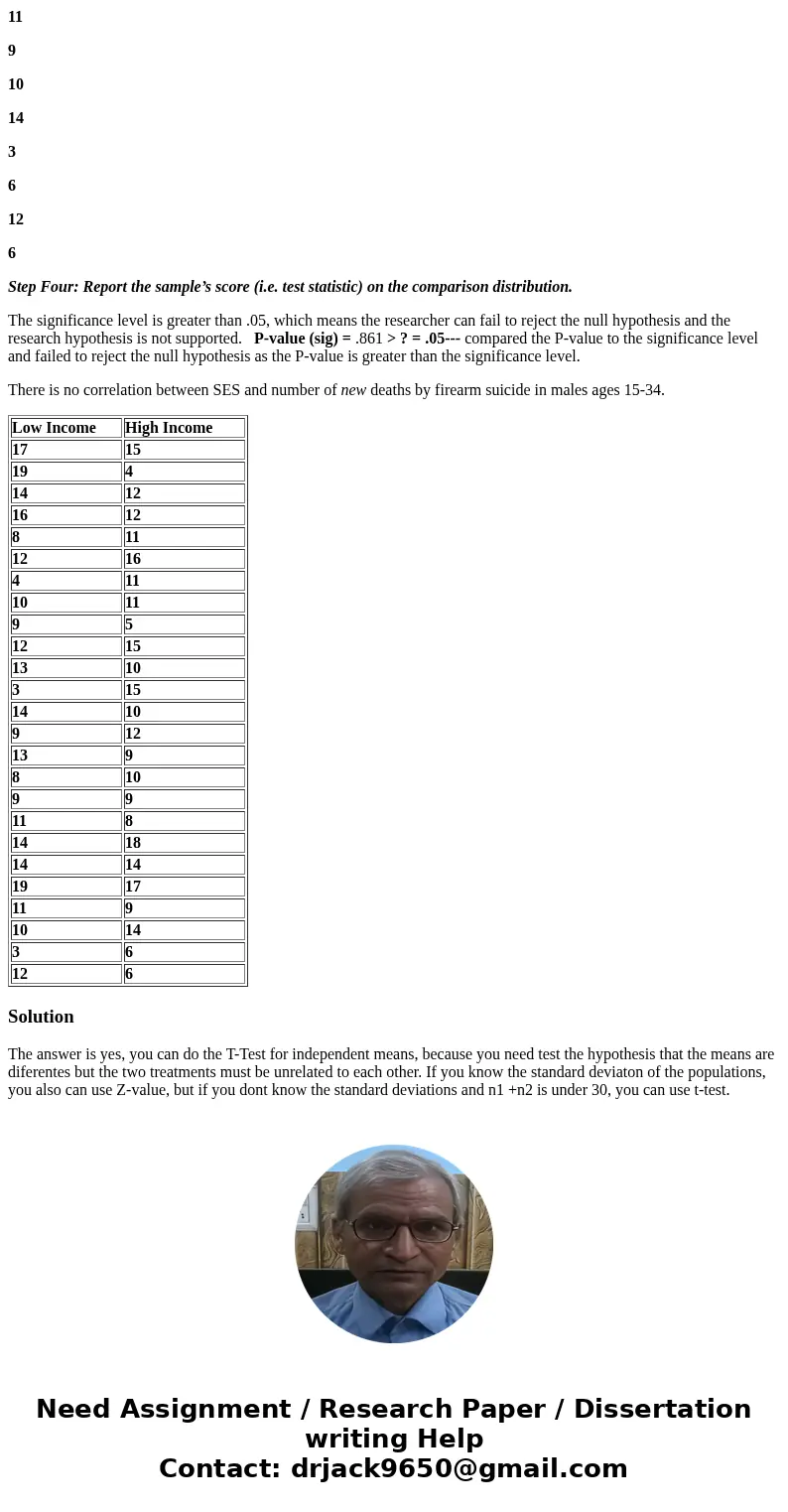Please let me know if Im on the right track Is analysis by t
Please let me know if I’m on the right track. Is analysis by the t-test of independent means correct? Why? Should I have use another test? Below is a mock dataset for SPSS
Step One: Populations
Population 1: set of suicide males socioeconomic impact
Population 2: set of suicide males who did not have socioeconomic impact
Non-Directional Null Hypotheses
There is no correlation between SES and number of new deaths by firearm suicide in males ages 15-34.
Non-Directional Alternative Hypothesis:
There is a correlation between SES and number of new deaths by firearm suicide in males ages 15-34.
Step Two: Characteristics of comparison distribution
Dependent Variable: cumulative incidence of new deaths by firearm suicide
Independent Variable: SES (income)
The variable is ordinal as we can order the SES of the people into various categories such as low, medium and high.
Confounding Variables: Depression
Step Three: Level of significance
In the non-directional hypothesis, a two tailed test was used because there could have been a difference in either direction.
The common level of significance of 0.05 is used. A significance level of 0.05 indicates a 5% risk of concluding that a difference exists when there is no actual difference.
I will compare the type of SES in young males and its impact on the cumulative incidence of new deaths by firearm suicide in each state. I selected two different classes to compare – low income versus high income. The cumulative incidence of new suicide deaths by firearm in males for each state will fall into 1 of 2 categories (25 records per group): Low income and high income. The data are listed below:
Low Income
High Income
17
15
19
4
14
12
16
12
8
11
12
16
4
11
10
11
9
5
12
15
13
10
3
15
14
10
9
12
13
9
8
10
9
9
11
8
14
18
14
14
19
17
11
9
10
14
3
6
12
6
Step Four: Report the sample’s score (i.e. test statistic) on the comparison distribution.
The significance level is greater than .05, which means the researcher can fail to reject the null hypothesis and the research hypothesis is not supported. P-value (sig) = .861 > ? = .05--- compared the P-value to the significance level and failed to reject the null hypothesis as the P-value is greater than the significance level.
There is no correlation between SES and number of new deaths by firearm suicide in males ages 15-34.
| Low Income | High Income |
| 17 | 15 |
| 19 | 4 |
| 14 | 12 |
| 16 | 12 |
| 8 | 11 |
| 12 | 16 |
| 4 | 11 |
| 10 | 11 |
| 9 | 5 |
| 12 | 15 |
| 13 | 10 |
| 3 | 15 |
| 14 | 10 |
| 9 | 12 |
| 13 | 9 |
| 8 | 10 |
| 9 | 9 |
| 11 | 8 |
| 14 | 18 |
| 14 | 14 |
| 19 | 17 |
| 11 | 9 |
| 10 | 14 |
| 3 | 6 |
| 12 | 6 |
Solution
The answer is yes, you can do the T-Test for independent means, because you need test the hypothesis that the means are diferentes but the two treatments must be unrelated to each other. If you know the standard deviaton of the populations, you also can use Z-value, but if you dont know the standard deviations and n1 +n2 is under 30, you can use t-test.



 Homework Sourse
Homework Sourse